6.8 Fireplaces, chimneys and flues
Appendix 6.8-A
Provision of combustion air
Notes:
Full details of ventilation requirements for all types of appliances are contained in the relevant building regulations.
* Decorative fuel effect gas appliances should have a provision for combustion air complying with the relevant part of BS 5871.
Normally a minimum of 10,000mm2 of purpose provided ventilation is required. Air vents should be direct to the external air or to an adjacent room or internal space which has an air vent or vents to the external air of at least the same free area. Air vents should have aperture dimensions no smaller than 5mm.
** Where closed appliances use a flue fitted with a draught stabiliser the total free area should be increased to 300mm2/kW for the first 5kw plus 850mm2/kW for the balance of appliance output.
***In the case of a fire with a canopy the open air vents should be 50% of the flue area.
Appendix 6.8-B
Minimum sizes for flues contained in chimneys
Inset live or decorative gas fuel effect appliances |
|
| Serving | Minimum flue size |
| Open fire within a fireplace opening up to 500mm x 550mm | Circular or rectangular minimum flue dimension 175mm |
Oil burning appliances up to 45kW output |
| Not less than the size of the appliance outlet |
Appendix 6.8-C
Typical construction details
KEY TO TERMS
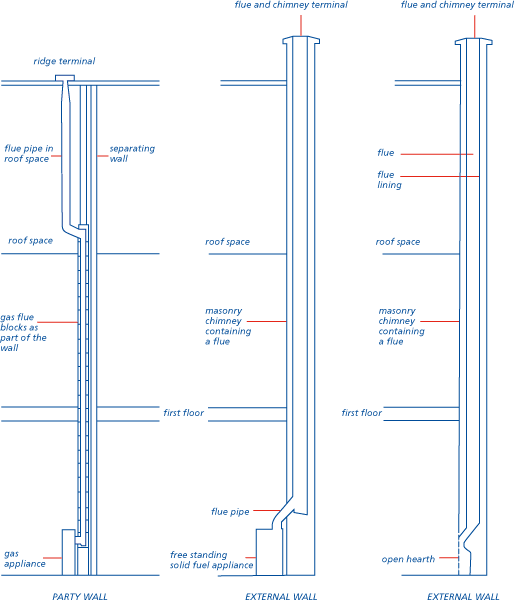
For weathering detail see Detail C
DETAILS OF EXTERNAL CHIMNEY BREAST WITH MASONRY INNER LEAF
Other alternatives may be suitable provided they meet the appropriate Performance Standards.
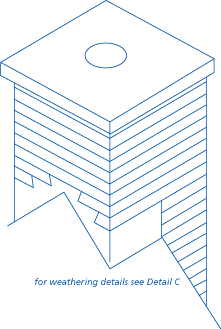
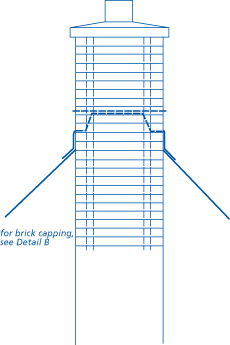
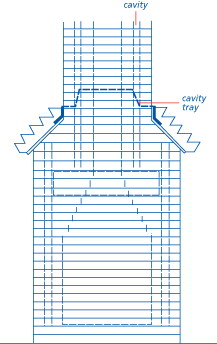
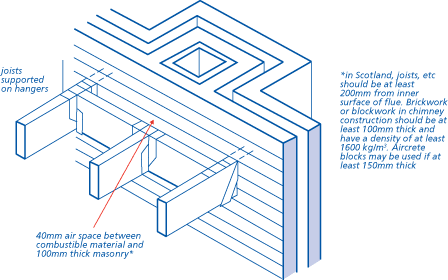
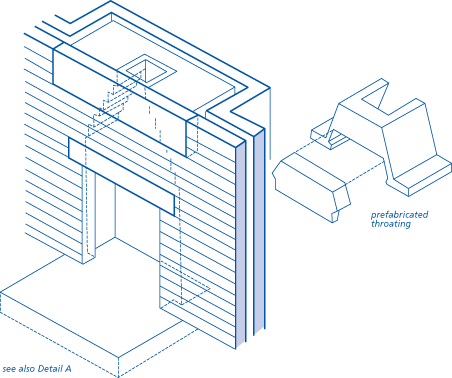
DETAIL A
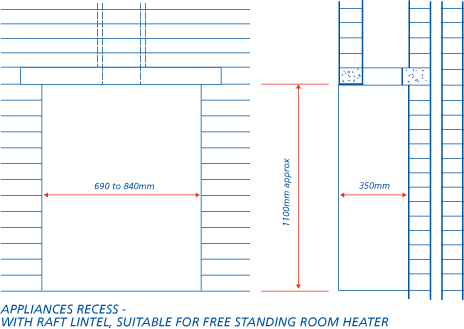
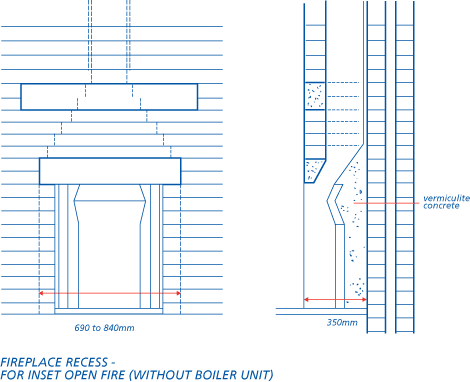
DETAIL B
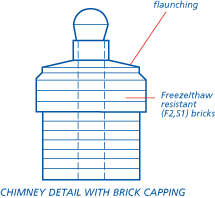
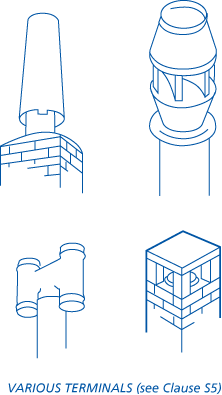
DETAIL C
Weatherproofing details recommended for use in Very Severe and Severe exposure zones.
In other exposure zones the dpc tray can be dressed up the outside of the flue liner. All other details are the same.
Note: All flashings and trays in chimneys to be metal (see Clause M11).
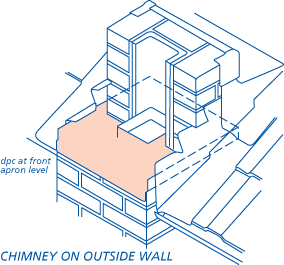
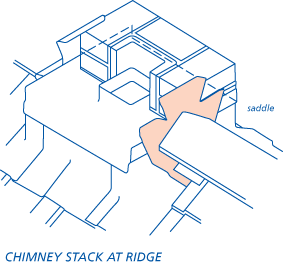
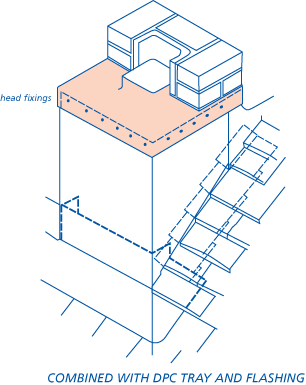
TYPICAL EXTERNAL FIREPLACE RECESS AND CHIMNEY-TIMBER FRAME CONSTRUCTION
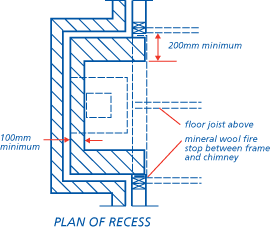
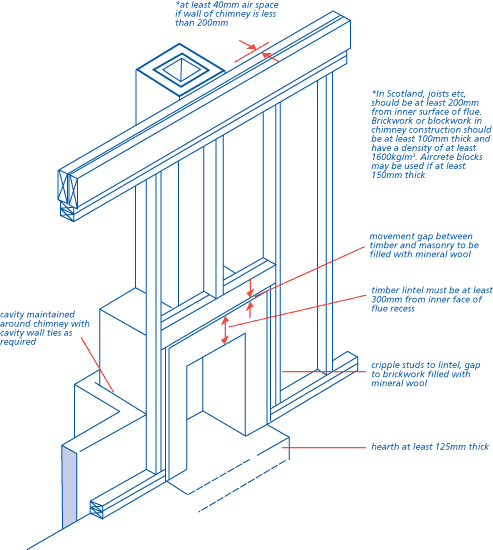
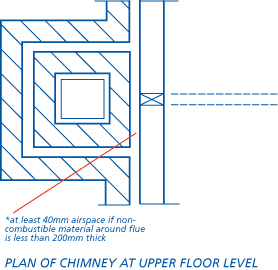
Appendix 6.8-D
Flue outlet positions for solid fuel appliances
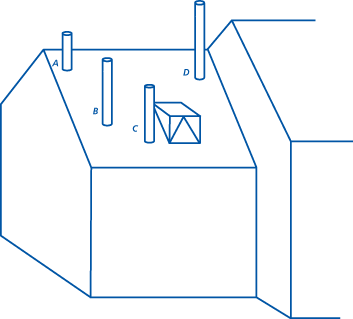
Notes
1) The weather surface is the building external surface, such as its roof, tiles or external walls.
2) A flat roof has a pitch less than 10°.
3) The clearance given for A or B, as appropriate, will also apply.
Appendix 6.8-E
Location of outlets from flues servicing gas appliances
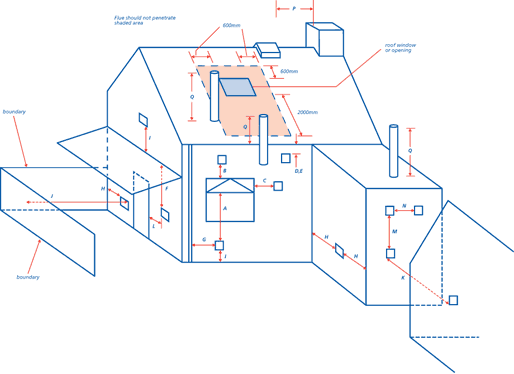
Location of outlets from flues serving gas appliances
Minimum separation distances for terminals in mm
| Location | Balanced flue |
Open flue |
||||
| Natural draught |
Fanned draught | Natural draught | Fanned draught | |||
| A | Below an opening (1) | Appliance rated heat input (net) | 300 | (3) | 300 | |
| 0-7kW >7-14kW >14-32kW >32kW |
300 600 1500 2000 |
|||||
| B | Above an opening (1) | 0-32kW >32kW |
300 600 |
300 | (3) | 300 |
| C | Horizontally to an opening (1) | 0-7kW >7-14kW >14kW |
300 400 600 |
300 |
(3) | 300 |
| D | Below gutters, soil pipes or drain pipes | 300 | 75 | (3) | 75 | |
| E | Below eaves | 300 | 200 | (3) | 200 | |
| F | Below balcony or car port roof | 600 | 200 | (3) | 200 | |
| G | From a vertical drainpipe or soil pipe | 300 | 150 (4) | (3) | 150 | |
| H | From an internal or external corner or to a boundary alongside the terminal (2) | 600 | 300 | (3) | 200 | |
| I | Above ground, roof or balcony level | 300 | 300 | (3) | 300 | |
| J | From a surface or a boundary facing the terminal (2) | 600 | 600 | (3) | 600 | |
| K |
From a terminal facing the terminal | 600 |
1200 |
(3) |
1200 |
|
| L | From an opening in the car port into the building | 1200 | 1200 | (3) | 1200 | |
| M | Vertically from a terminal on the same wall | 1200 | 1500 | (3) | 1500 | |
| N | Horizontally from a terminal on the same wall | 300 | 300 | (3) | 300 | |
| P | From a structure on the roof | N/A | N/A | 1500mm if a ridge terminal. For any other terminal, as given in BS 5440-1:2000 | N/A | |
| Q | Above the highest point of intersection with the roof | N/A | Site in accordance with manufacturer's instructions | Site in accordance with BS 5440-1:2000 | 150 | |
Notes:
- An opening here means an openable element, such as an openable window, or a fixed opening such as an air vent. However, in addition, the outlet should not be nearer than 150mm (fanned draught) or 300mm (natural draught) to an opening into the building fabric formed for the purpose of accommodating a built in element, such as a window frame.
- Boundary as defined in Paragraph 0.4. of Approved Document J: smaller separations to the boundary may be acceptable for appliances that have been shown to operate safely with such separations from surfaces adjacent to or opposite the flue outlet.
- Should not be used.
- This dimension may be reduced to 75mm for appliances of up to 5kW input (net).
- N/A means not applicable.
Appendix 6.8-F
Location of outlets from flues serving oil-fired appliances
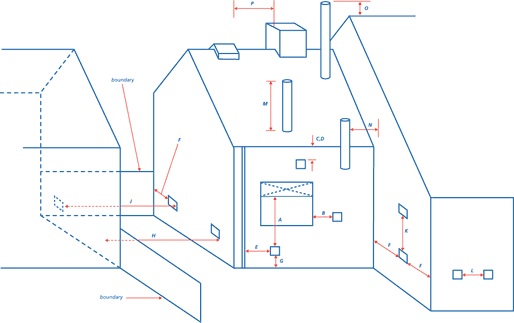
Minimum separation distances for terminals in mm
| Location of outlet (1) |
Appliance with pressure jet burner | Appliance with vaporising burner | |
| A | Below an opening (2, 3) | 600 | should not be used |
| B | Horizontally to an opening (2, 3) | 600 | should not be used |
| C | Below a plastic/painted gutter, drainage pipe or eaves if combustible material protected (4) | 75 | should not be used |
| D | Below a balcony or a plastic/painted gutter, drainage pipe or eaves without protection to combustible material | 600 | should not be used |
| E | From vertical sanitary pipework | 300 | should not be used |
| F | From an external or internal corner or from a surface or boundary alongside the terminal | 300 | should not be used |
| G | Above ground or balcony level | 300 | should not be used |
| H | From a surface or boundary facing the terminal | 600 | should not be used |
| J | From a terminal facing the terminal | 1200 | should not be used |
| K | Vertically from a terminal on the same wall | 1500 | should not be used |
| L | Horizontally from a terminal on the same wall | 750 | should not be used |
| M | Above the highest point of an intersection with the roof | 600 (6) | 1000 (5) |
| N | From a vertical structure to the side of the terminal | 750 (6) | 2300 |
| O | Above a vertical structure which is less than 750mm (pressure jet burner) or 2300mm (vaporising burner) horizontally from the side of the terminal | 600 (6) | 1000 (5) |
| P | From a ridge terminal to a vertical structure on the roof | 1500 | should not be used |
Notes:
- Terminals should only be positioned on walls where appliances have been approved for such configurations when tested in accordance with BS EN 303-1:1999 or OFTEC standards OFS A100 or OFS A101.
- An opening means an openable element, such as an openable window, or a permanently open air vent.
- Notwithstanding the dimensions above, a terminal should be at least 300mm from combustible material, e.g. a window frame.
- A way of providing protection of combustible material would be to fit a heat shield at least 750mm wide.
- Where a terminal is used with a vaporising burner, the terminal should be at least 2300mm horizontally from the roof.
- Outlets for vertical balanced flues in locations M, N and O should be in accordance with manufacturer's instructions.





















